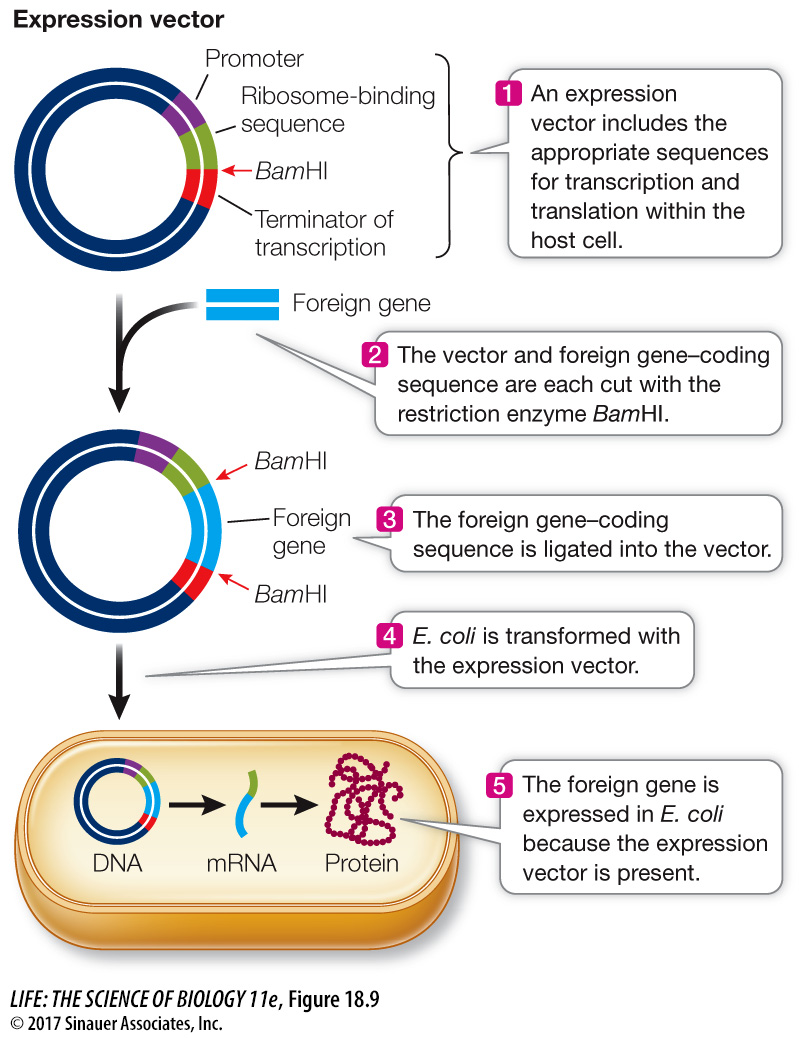Cells can be turned into factories for a desired protein
If a eukaryotic gene is inserted into a typical bacterial plasmid and used to transform E. coli, little if any of the gene product will be made unless other key prokaryotic DNA sequences are included with the gene. A bacterial promoter, a signal for transcription termination, and a special sequence that is necessary for binding of bacterial ribosomes to the mRNA must all be included in the transformation vector if the gene is to be expressed in a bacterial cell.
To ensure expression of foreign genes by host cells, scientists make expression vectors having not only the characteristics of cloning vectors, but the extra sequences needed for the foreign gene (also called a transgene) to be expressed in the host cell. The insertion of an expression vector for a bacterial host is illustrated in Figure 18.9. An expression vector for a eukaryotic host would require the poly A–

Activity 18.2 Expression Vectors
An expression vector can be designed to deliver transgenes to any class of prokaryotic or eukaryotic host and may include additional features:
An inducible promoter, which responds to a specific signal, can be included. For example, a promoter that responds to hormonal stimulation can be used so that the transgene will be expressed at high levels only when the hormone is added.
A tissue-
specific promoter , which is expressed only in a certain tissue at a certain time, can be used if localized expression is desired. For example, many seed proteins are expressed only in the plant embryo. Coupling a transgene to a seed-specific promoter will allow the gene to be expressed only in seeds. Signal sequences can be added so that the gene product is directed to an appropriate destination. For example, when a protein is made by yeast or bacterial cells in a liquid medium, it is economical to include a signal directing the protein to be secreted into the extracellular medium for easier recovery.